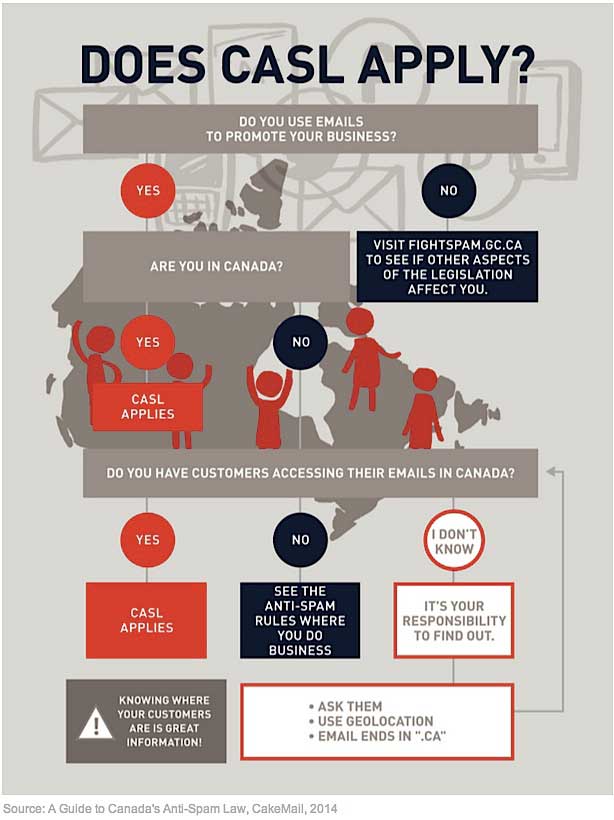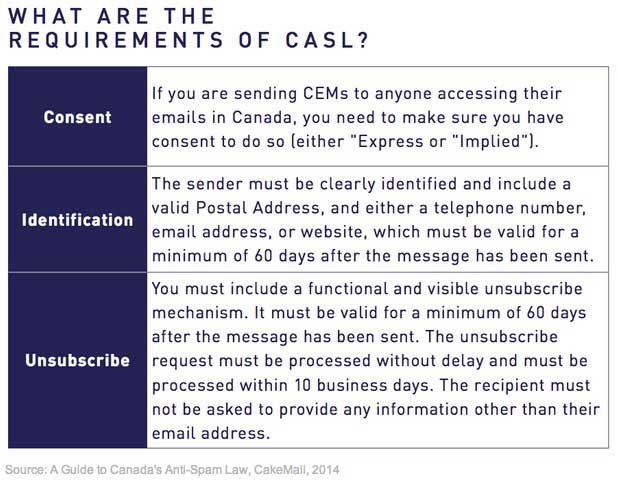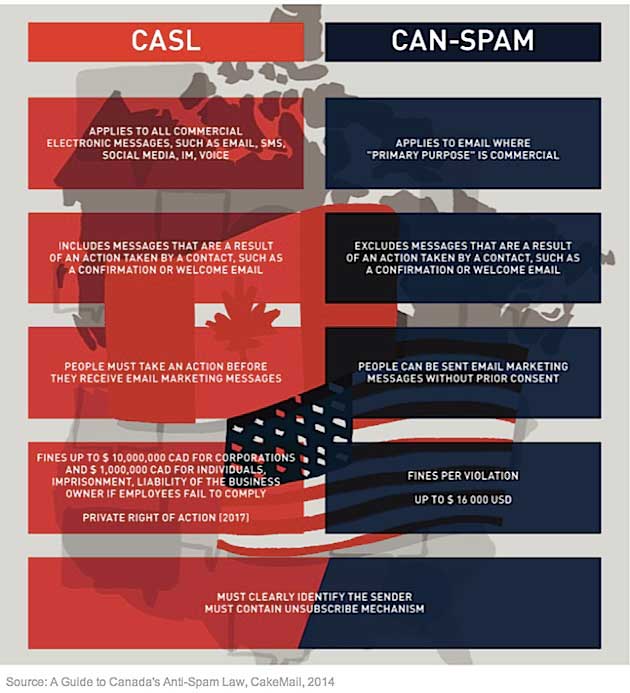Canada's anti-spam legislation (CASL), which is set to start going into effect on July 1, will likely have a significant impact not only on email marketers based in Canada but also on marketers in other countries, according to a recent report from CakeMail.
As the company's overview of the new law notes, "If you own or operate a business in Canada, or if you have emails on your list ending in '.ca'—chances are pretty good that CASL applies to you."
According to CakeMail, the regulations will likely affect any organization that uses email to promote its business in Canada. Moreover, it puts the burden of determining whether recipients are accessing messages in the country on the marketer.

Below, key details about the legislation from CakeMail's overview.
Requirements and Timing
- The date of enforcement for CASL is July 1, 2014, but there will will be a three-year transitional period in which marketers will be permitted to continue sending "CEMs" (electronic messages that encourage participation in commercial activity) to existing customers, according to CakeMail.
- Marketers have until July 1, 2017, to acquire "Express" consent (i.e., opt-in confirmation) for customers that are on email lists through existing business relationships.
- The legislation is broad and includes aspects that address many types of electronic communications, including social media and mobile messages.
- For email, the core requirements are that marketers gain consent from subscribers, senders be clearly identified, and consumers have the ability to unsubscribe from lists.

The Differences Between CASL and CAN-SPAM
- The biggest difference between CASL and the CAN-SPAM Act in the US is that Canada's legislation requires consent, according to CakeMail.
- In particular, whereas sending emails to purchased or rented lists is not necessarily a violation of CAN-SPAM, it is a violation of CASL.

For more information on the legislation, check out CakeMail's full overview and the Canadian government's CASL website.




